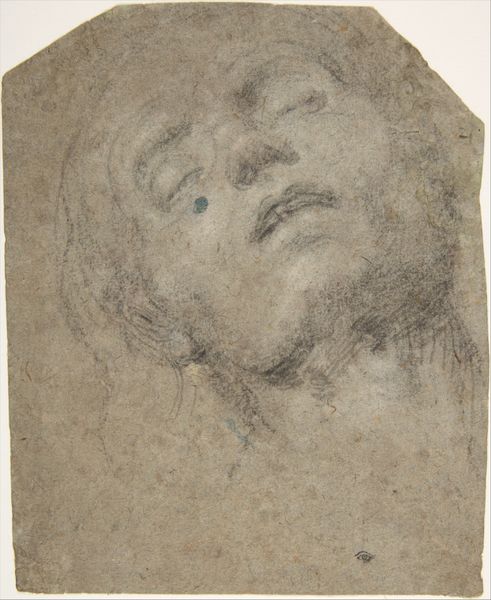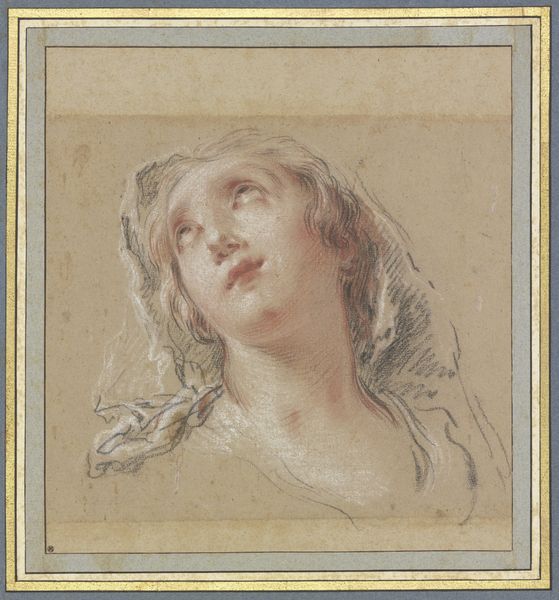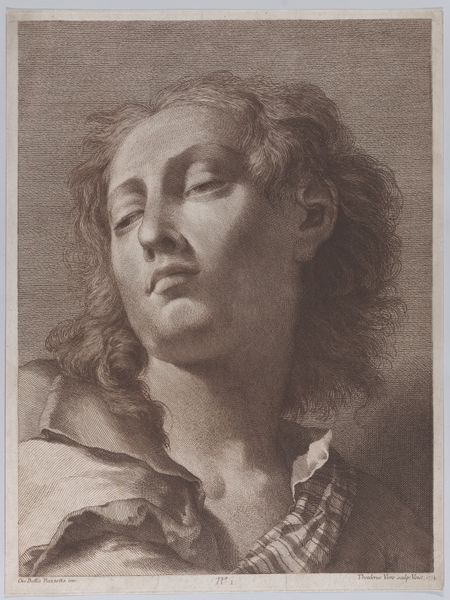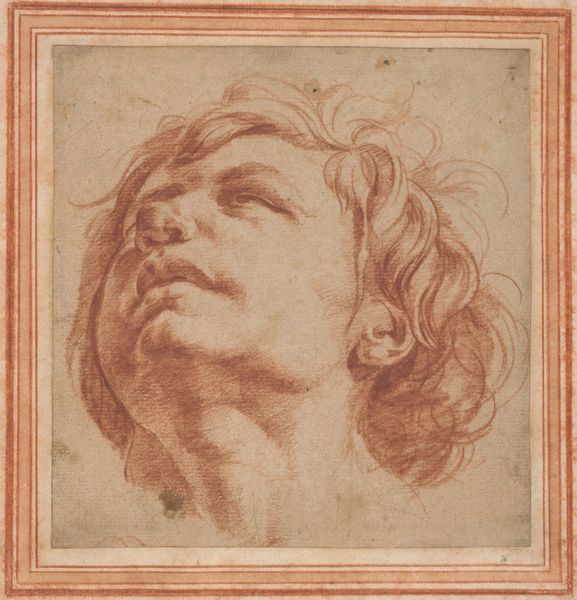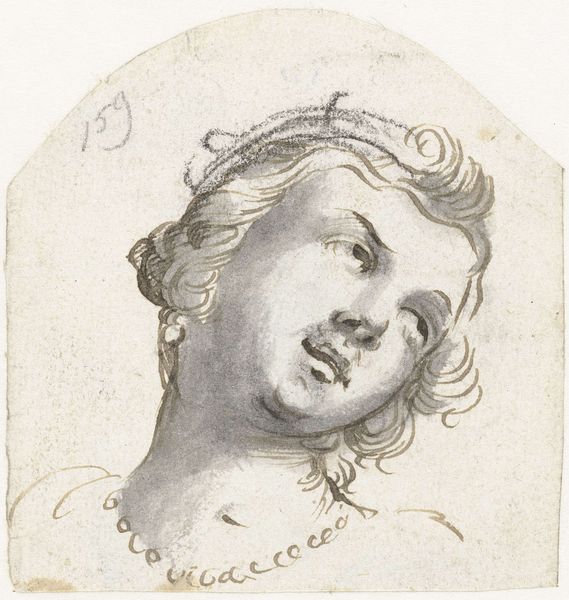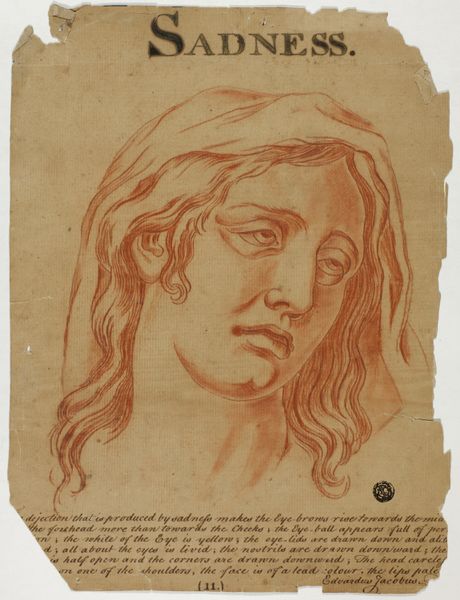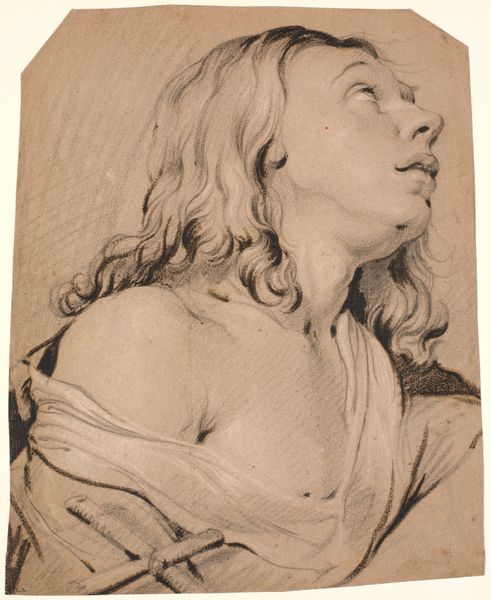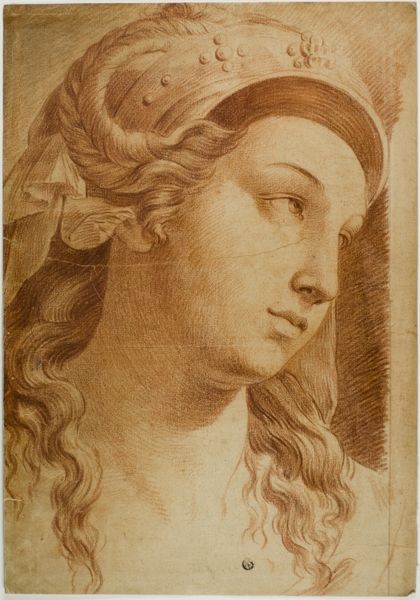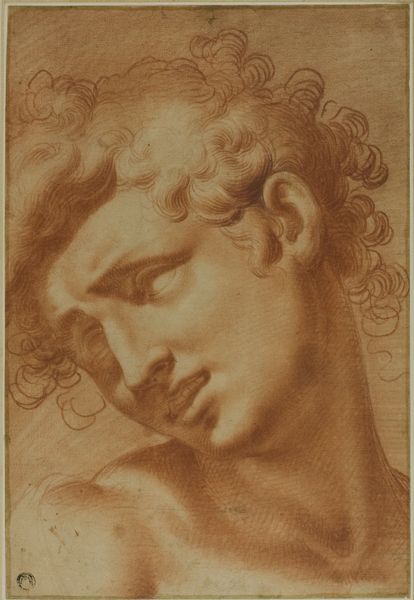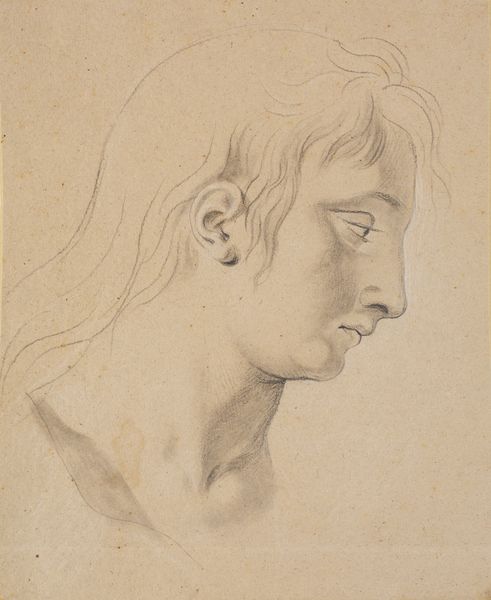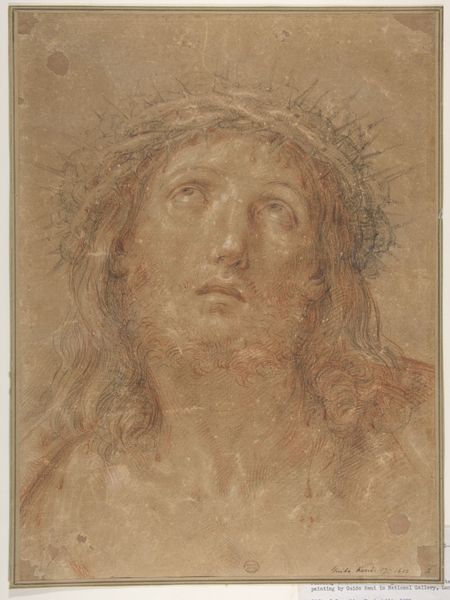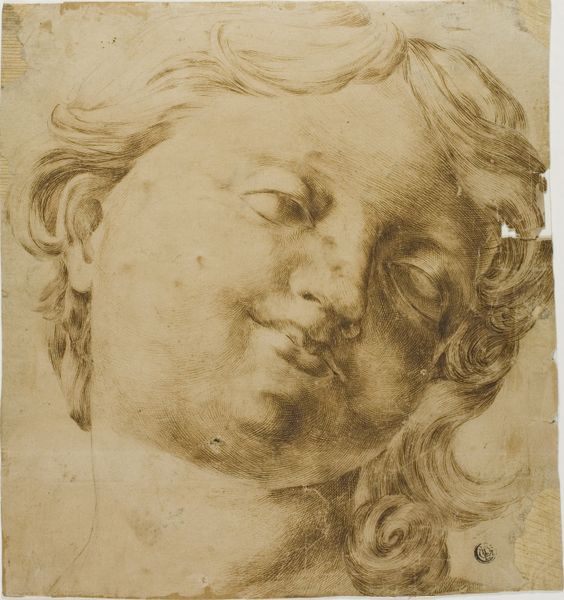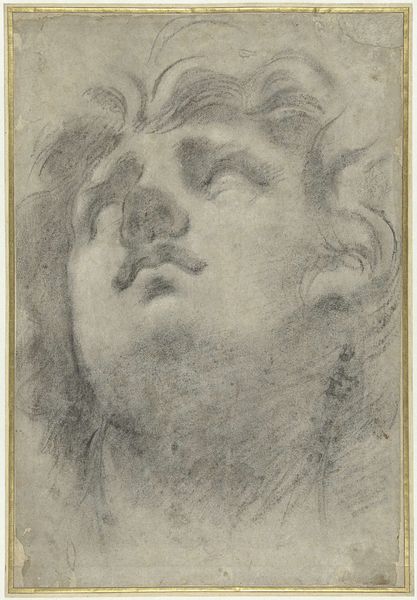
drawing, print, paper, charcoal
#
portrait
#
drawing
# print
#
charcoal drawing
#
figuration
#
paper
#
11_renaissance
#
charcoal
#
italian-renaissance
Dimensions: 135 × 115 mm
Copyright: Public Domain
Curator: There's something so serene and melancholic about this piece, don't you think? Editor: Yes, quite striking! This is "Female Head" by Giovan Gioseffo dal Sole. The Art Institute of Chicago houses this drawing, and though the exact date is unknown, its style firmly places it within the Italian Renaissance. It's charcoal on paper. Curator: The texture is what draws me in immediately. The soft blurring of the charcoal, how it catches the light. You can almost feel the roughness of the paper. Was drawing with charcoal a common method at this time? Editor: Absolutely. Charcoal was an easily accessible medium and considered fundamental for artists of the time. It allowed for a full range of tones to suggest form, making it ideal for preliminary studies. Examining the verso can reveal much about the drawing’s production, whether for learning or compositional studies for larger projects. Consider the social context: who had access to this skill, this type of training? The relative availability of the medium contrasts with the rather exclusive nature of art education during the Renaissance. Curator: And look at how Dal Sole uses light and shadow to give her face such depth and emotion! It is the traditional ‘sleeping’ or ‘unconscious’ pose of a figure, maybe even one ready to be beheaded by the strong masculine presence often represented. Editor: Exactly! Dal Sole was celebrated in Bologna during his life. There were academies that often pushed forward some women artists and patrons of the arts, like Properzia de Rossi. In her history of art making, how many were afforded her luxury in gender parity, access, etc.? Curator: But, still the tools are important. To use such a simple medium to achieve such a complex image is fascinating! Editor: Precisely. It calls us to consider not only the artist's intention and skill but also the socio-economic systems that enabled its very creation and existence. The question is who this representation would stand for. What are her politics? Where did she come from, or will she go to? Curator: Indeed. It’s a compelling piece from a historical and material perspective, leaving much to be further unraveled. Editor: A piece ripe for exploring intersectional identities and challenging historical power structures in art, all conveyed through this resting image.
Comments
No comments
Be the first to comment and join the conversation on the ultimate creative platform.
